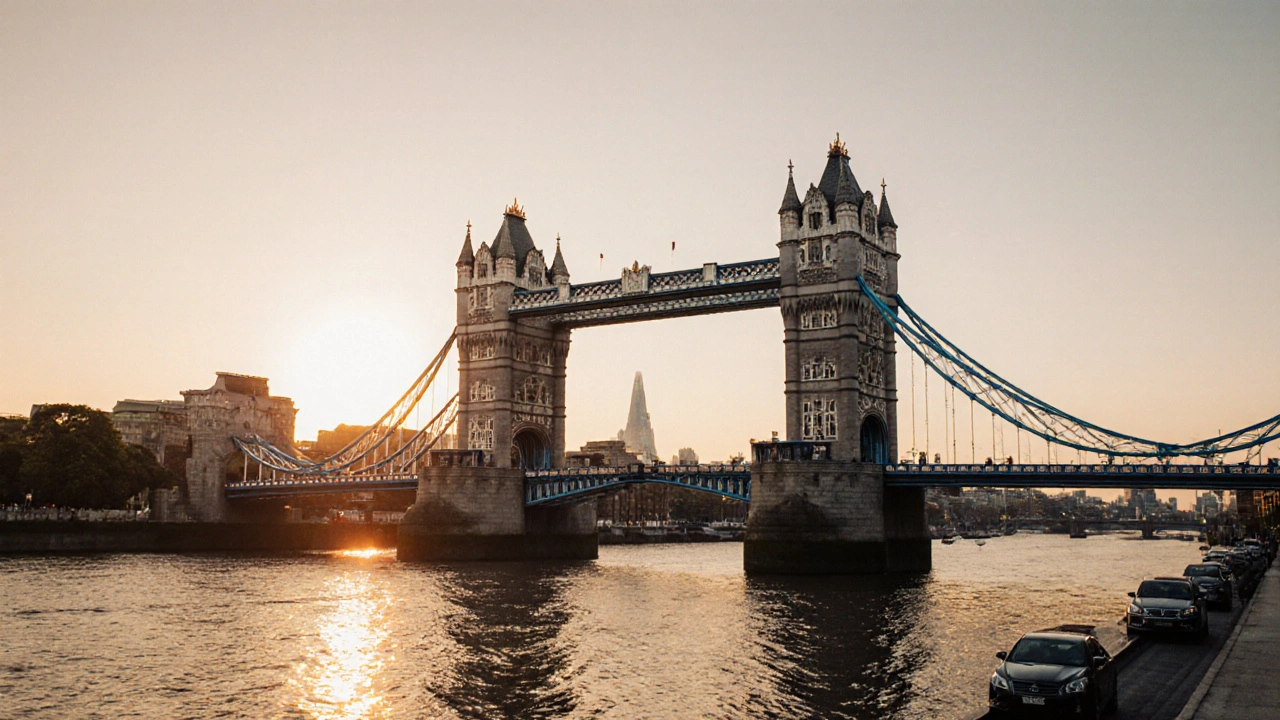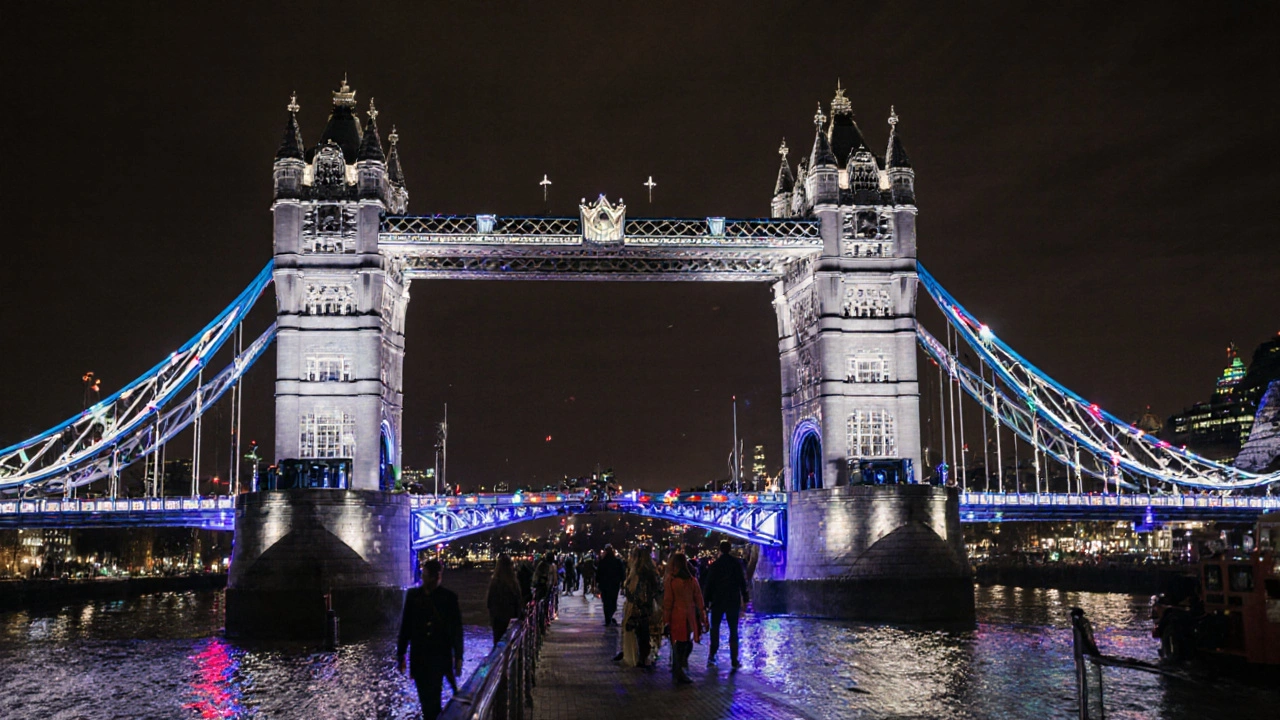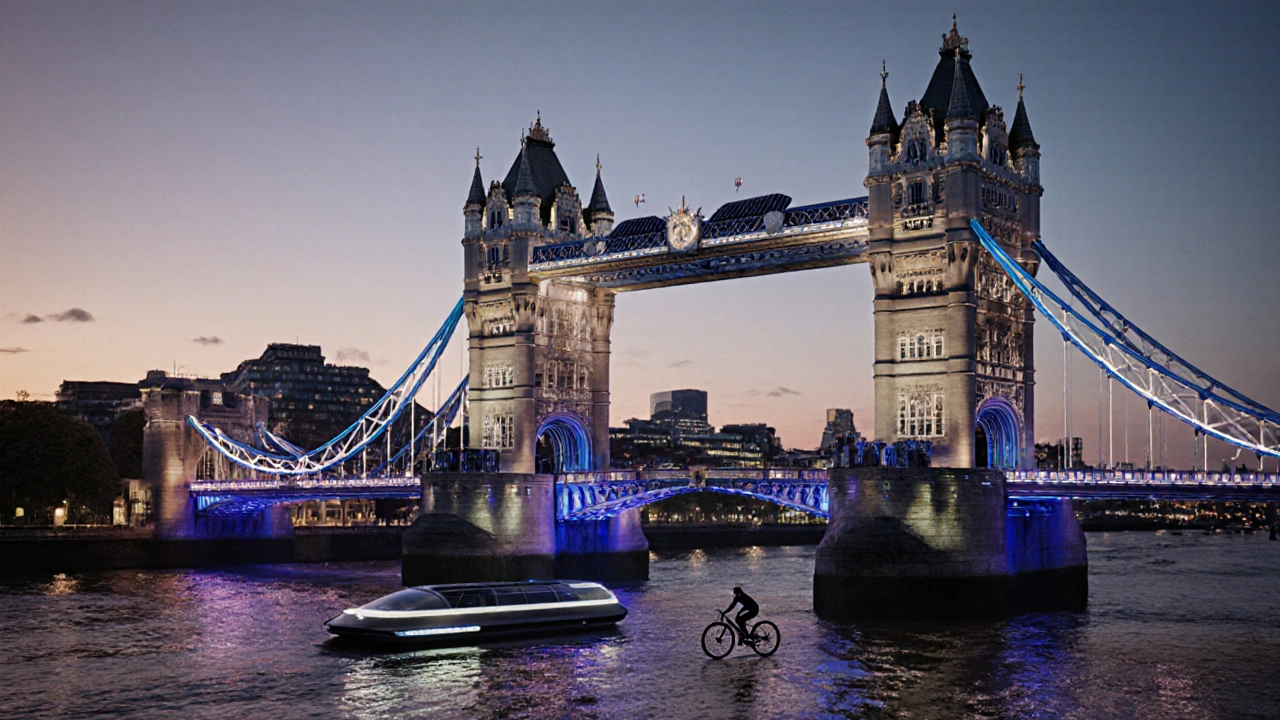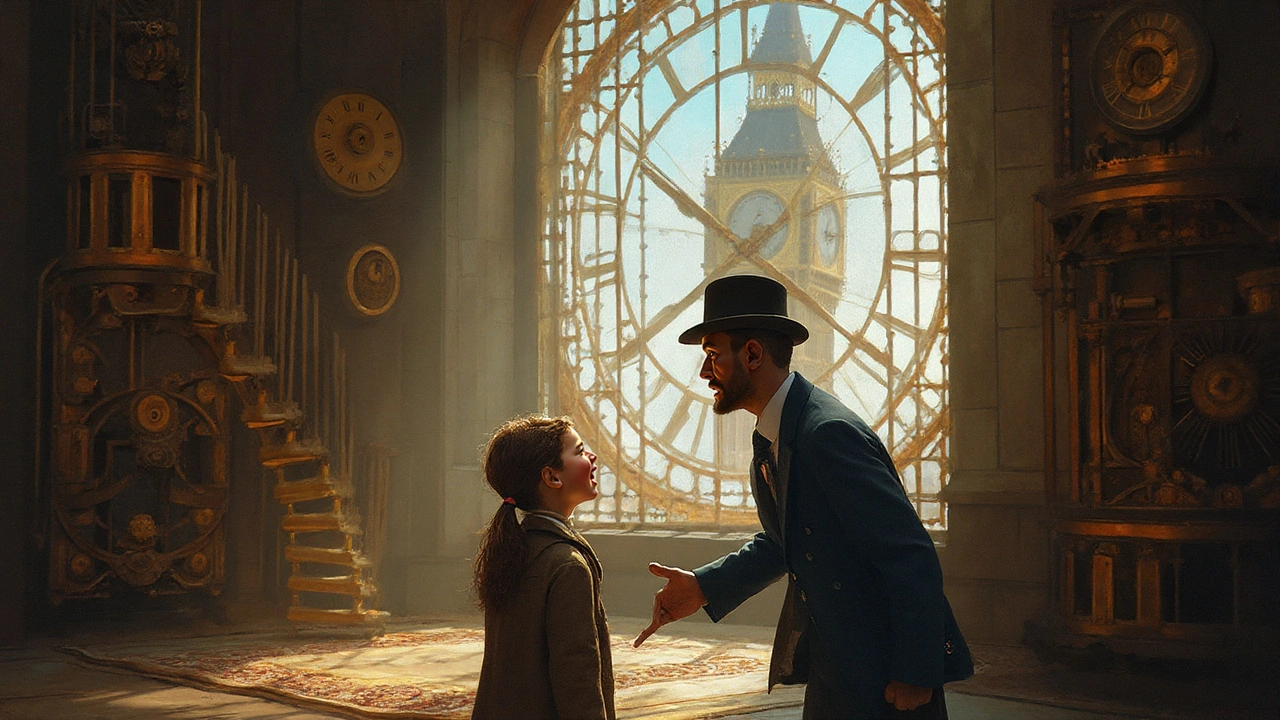Tower Bridge’s Impact on London’s Urban Landscape

Key Takeaways
- Tower Bridge shapes daily commutes, tourism flow and the visual identity of the Thames corridor.
- Its bascule and suspension design set engineering standards still referenced in modern projects.
- The bridge links the City of London with Southwark, boosting business districts on both banks.
- Cultural events and media exposure turn the bridge into a global symbol of London.
- Future upgrades focus on sustainability, pedestrian comfort and integration with river transport.
Spanning the Thames River in London, Tower Bridge is a landmark that does more than look iconic. Since its opening in 1894, the bridge has become a living part of the city’s transport network, a magnet for visitors, and a reference point for planners shaping the capital’s skyline. This guide explains how the structure influences the urban fabric, the economy and everyday life for locals, expats and tourists alike.
History and Engineering Marvel
The idea of a movable crossing near the Tower of London emerged in the late 1800s, when river traffic demanded a bridge that could open for tall ships while still carrying road traffic. Engineers Sir John Wolfe-Barry and Sir Horace Jones delivered a hybrid bascule‑suspension system that could raise its two sections in under five minutes. The original construction used over 11,000 tons of steel and more than 200,000 rivets - a feat celebrated by the Institution of Civil Engineers at the time.
Beyond its mechanical brilliance, the bridge’s Victorian Gothic towers were intentionally designed to echo the nearby Tower of London, creating a visual dialogue between medieval heritage and modern engineering. Today, those towers house a museum that showcases the original hydraulic machinery, reminding visitors that the bridge’s heart still beats with 19th‑century ingenuity.
Connecting the City: Transport and Mobility
For commuters, Tower Bridge is a vital artery linking the financial hub of the City of London with the vibrant Southwark neighborhoods. The bridge carries the A100 road, a key route for buses, taxis and private cars heading to Canary Wharf, the O2 arena and the South Bank cultural quarter.
Transport for London (Transport for London) integrates the bridge into a wider multimodal system. River bus services, operated by Thames Clippers, dock just downstream, allowing passengers to hop off a boat and walk across the bridge in minutes. The pedestrian walkways, widened during the 2010s upgrade, now see over 10,000 footfalls per day, linking the Tower Hill Underground station with the nearby Borough Market - a foodie hotspot that thrives on that foot traffic.
During high‑tide events, such as the annual Thames Festival, the bascules are lifted in a choreographed display that synchronises with river traffic and street performances, turning a functional necessity into a citywide spectacle.

Economic Engine: Tourism and Business
Tourists rank Tower Bridge among the top three London attractions, attracting roughly 2 million visitors annually. The panoramic walkways and glass‑floor experience generate ticket revenue that supports the bridge’s ongoing maintenance and the museum’s educational programmes.
\nLocal businesses reap indirect benefits. Restaurants along the St. Katharine Docks, the historic marina just north of the bridge, report a 25% increase in weekday diners during bridge‑opening hours. Moreover, the iconic silhouette appears on promotional material for the London Marathon, the Evening Standard’s “London’s Best Eats” guide, and countless travel‑influencer posts, reinforcing the city’s brand worldwide.
Cultural Symbolism and Media Presence
Beyond bricks and steel, Tower Bridge serves as a cultural shorthand for “London”. It features in movies ranging from James Bond thrillers to romantic comedies, and on postage stamps celebrating the city’s heritage. The bridge’s illuminated night‑time lighting, refreshed in 2022 with energy‑efficient LEDs, adds a splash of colour to the river skyline, making it a backdrop for events like New Year’s Eve fireworks and the Notting Hill Carnival’s river parade.
For residents, the bridge is a meeting point - couples exchange vows under its arches, photographers capture milestones, and local schools organise history trips that tie curriculum lessons to a tangible piece of the city’s story.
Urban Planning and Future Challenges
London’s rapid growth demands that historic infrastructure adapt without losing character. Recent studies by the Greater London Authority recommend a “smart bridge” retrofit: installing sensors to monitor structural health, integrating real‑time traffic data, and adding solar panels to power the bridge’s lighting.
Environmental concerns also drive change. The River Thames is a designated “clean‑up” zone, and the bridge’s maintenance crews now use low‑impact cleaning agents to protect aquatic life. Planners are exploring a dedicated cycle lane on the north side of the walkways, responding to the city’s push for greener commuting options.
Balancing heritage preservation with modern demands remains a delicate act. Any alteration must pass scrutiny from Historic England, the body that protects listed structures, ensuring that any upgrade respects the bridge’s Grade I status.

Visitor Tips: Making the Most of Your Visit
- Buy tickets online to skip the queue, especially during the summer months.
- Visit early morning or late evening for quieter walkways and stunning light‑play on the river.
- Combine a bridge tour with a stroll to the nearby Borough Market for a bite of local street food.
- Check the bascule schedule on the official website before planning a river‑bus trip; opening times are posted on a digital board beside the bridge.
- Don’t miss the glass‑floor walkway for a bird’s‑eye view of river traffic and the historic towers.
Comparison with Other Thames Crossings
| Attribute | Tower Bridge | London Bridge | Millennium Bridge |
|---|---|---|---|
| Opening year | 1894 | 1973 (current) | 2000 |
| Type | Bascule & suspension | Concrete arch | Pedestrian suspension |
| Length (m) | 244 | 269 | 325 |
| Daily vehicular traffic | ~10,000 vehicles | ~30,000 vehicles | Pedestrian only |
| Annual tourist visits | ~2million | ~800,000 | ~1million |
Frequently Asked Questions
When does Tower Bridge open for river traffic?
The bascules are raised on a schedule that changes with the tide. Typical opening times are listed on the bridge’s information boards and online, usually between 8am‑10am and 4pm‑6pm on weekdays.
Is there a wheelchair‑friendly route across the bridge?
Yes, both walkways have ramp access and tactile paving. The museum lift provides wheelchair access to the engine rooms.
Can cyclists use the bridge?
Cyclists are allowed on the north‑side walkway, but the south‑side is currently reserved for pedestrians only. A dedicated cycle lane is under consideration by TfL.
What is the best time to photograph the bridge?
Early sunrise gives a golden glow and fewer crowds, while the blue hour just after sunset captures the LED lighting over the water.
How does the bridge contribute to local businesses?
Foot traffic from tourists fuels restaurants, souvenir shops and the market stalls at St. Katharine Docks. Surveys show a 20‑30% revenue lift on days when the bridge’s bascules are open for special events.


Dustin Lauck
October 13, 2025 AT 15:23If you ever wondered why Tower Bridge feels like the favorite caffeine boost for London commuters, it's because its bascules open faster than a barista can spell "latte" – under five minutes, no less. That kind of reliability makes daily travel feel almost breezy, despite the occasional tourist selfie crowds. Plus, the bridge’s iconic silhouette doubles as free advertising for the city; you can’t walk past it without feeling a tiny surge of civic pride. So, next time you’re stuck in traffic, just picture the engineers of 1894 giving a cheeky wink to modern gridlock.
sarah young
October 14, 2025 AT 15:53Totally get where you're comin from – the bridge is like a big, shiny whael that keeps the city movin'. I owrk in Southwark and we see the foot traffic spike every time the basculs lift for a show. It's kinda cool how a 19th‑century machine still pulls off a daily miracle, even if the lines for the glass‑floor can be mad long. Keep vibin'!
John Bothman
October 16, 2025 AT 09:33When you examine Tower Bridge through a pseudo‑philosophical lens, you realize it embodies the tension between permanence and flux. The bridge stands as a concrete‑steel manifesto that the city can both honor its heritage and adapt to future mobility demands. Its integration with river bus services demonstrates a systemic approach to multimodal transit, reducing reliance on cars and encouraging sustainable commuting. In casual terms, it’s a daily reminder that engineering can be both functional and beautiful.
mike morgan
October 17, 2025 AT 07:46Permit me to elucidate, dear reader: Tower Bridge is not merely an ornamental relic but a testament to British engineering supremacy, a veritable monument to our nation's indomitable spirit. One must recognize that the very notion of a “bridge” here transcends pedestrian convenience-it is a strategic artery, a symbol of imperial resolve, and a catalyst for economic vigor. Any insinuation that modern upgrades might dilute its historic gravitas is, frankly, an affront to our cultural heritage. Therefore, let us proceed with caution, preserving the sanctity of this iconic structure whilst embracing necessary technological enhancements.
Beth Wylde
October 19, 2025 AT 09:46Standing beneath those Gothic towers, I often contemplate how infrastructure shapes our collective memory. The bridge acts as a quiet confidant for countless Londoners-offering solace during rush hour, inspiration for artists, and a meeting point for lovers. Its presence invites us to consider the balance between progress and preservation, reminding us that every footstep on its walkway carries a story worth honoring.
Ellen Smith
October 20, 2025 AT 08:00While the bridge certainly attracts tourists, the upkeep costs often outweigh the modest ticket revenue, suggesting a need for fiscal prudence.
Yvonne LaRose
November 1, 2025 AT 13:26From an interdisciplinary perspective, Tower Bridge serves as a quintessential case study in urban systems integration; it unites structural engineering, transportation planning, heritage conservation, and socio‑economic dynamism into a singular, observable entity. Firstly, the bridge’s hydraulic bascule mechanism, originally powered by steam, now operates via energy‑efficient electric pumps, illustrating a successful retro‑fit that balances historical authenticity with contemporary sustainability metrics. Secondly, the pedestrian walkways, after their recent widening, have facilitated a measurable increase in footfall-exceeding 10,000 daily passages-thereby amplifying commercial activity at adjacent markets such as St. Katharine Docks and Borough; this uplift has been quantified in recent GLA reports as a 22 % rise in local revenue during peak tourist seasons. Thirdly, the bridge’s LED illumination system, installed in 2022, not only reduces carbon emissions by an estimated 35 % compared to legacy floodlights but also enhances nighttime visibility, contributing to public safety and the city’s nocturnal aesthetic appeal. Moreover, the planned sensor network-encompassing strain gauges, vibration detectors, and environmental monitors-will generate real‑time data streams that can be fed into predictive maintenance algorithms, thus pre‑empting structural fatigue and extending service life beyond the projected 150‑year horizon. In addition, the integration of a dedicated cycle lane, as advocated by TfL, aligns with London’s broader climate‑action agenda, encouraging modal shift from motor vehicles to low‑impact active transport, which in turn reduces urban air pollutants and congestion. Furthermore, the bridge’s cultural resonance-manifested through its frequent appearances in film, literature, and global media-serves as a soft power asset, reinforcing the city’s brand identity and attracting a diversified influx of visitors, investors, and talent. Finally, interdisciplinary collaboration among architects, engineers, historians, and community stakeholders has been pivotal in navigating the complex regulatory landscape imposed by Historic England; this collaborative governance model exemplifies best‑practice for managing heritage‑listed infrastructure amidst evolving urban demands. In sum, Tower Bridge epitomizes the synergy of historic preservation and forward‑looking innovation, offering a replicable template for cities worldwide seeking to harmonize legacy assets with 21st‑century resiliency goals.
Lisa Kulane
November 2, 2025 AT 17:13Admittedly, while the preceding exposition praises the bridge’s multifunctionality, one must interrogate the inevitable trade‑offs: the sensor array, though technologically impressive, poses a latent risk of data commodification, potentially enabling surveillance under the guise of structural health monitoring. Moreover, the focus on tourist-centric revenue overlooks the subtle erosion of local character caused by overt commercialization, a phenomenon that meritocratic urban planning should vigilantly guard against.
Rob e
November 13, 2025 AT 03:13The bridge’s “upgrades” are merely a façade for governmental overreach – ever noticed the hidden cameras?
Devon Rooney
November 14, 2025 AT 01:26It's important to differentiate between legitimate safety enhancements and unwarranted surveillance; transparent governance and community oversight can ensure that technological progress serves public interest without compromising privacy.